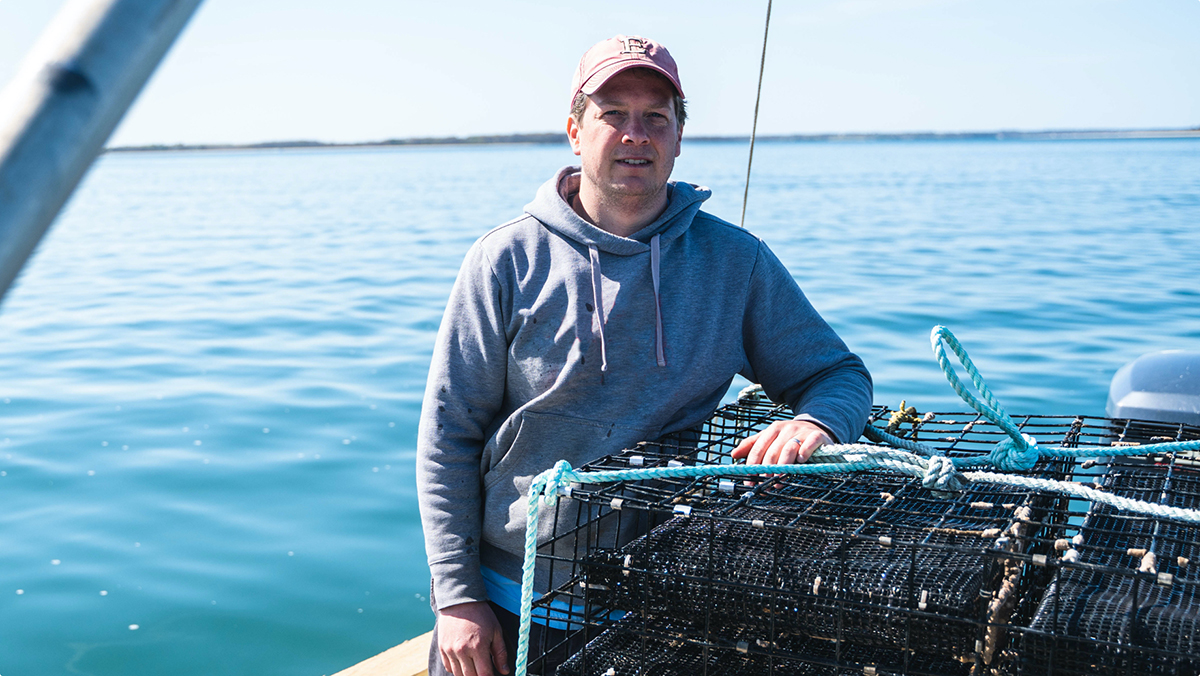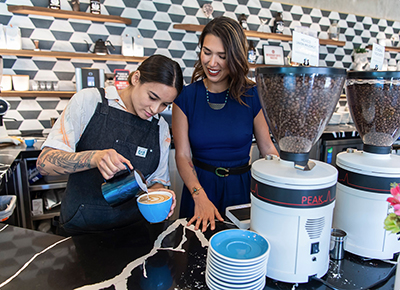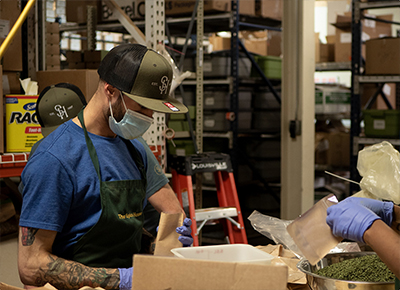Peter Stein, Owner | New Suffolk, NY | B2B / Food Services

PETER STEIN, OWNER
One-third (34%) of small businesses surveyed said they will rely more on digital tools after the COVID-19 crisis than they did before; only 1% said they will use them less.
Nearly 40% of small businesses say that they’ve relied on digital tools to find new customers during the COVID crisis, and 36% say they have used digital tools to pivot to online sales.
Oyster farming is a tough business. It carries hours of day-to-day farm responsibilities coupled with the complicated logistics of actually getting oysters to customers—largely restaurants. Peter was new in the industry and hardly in a position to throw money at any of the challenges facing him. That’s why he was so grateful for the range of low-cost and free digital tools that helped him develop his business from the ground up. He began using FarmersWeb to manage the day-to-day logistics of running a small farm and moving his product to market—everything from order fulfillment and invoicing to accounts receivable. He turned to Google Docs to help manage e-commerce as well as the significant amount of regulatory reporting that a farm like his must undertake every month; he developed a centralized, customizable Google form that every employee could update in real time and send to respective agencies. Then, to market his new venture, he advertised online on social media platforms like Instagram and via digital newsletters.
“Like many small businesses, I had to do everything on a very shoestring budget, and I had a lot to get done,” Peter recalls. “I was the secretary, I was the CFO, I was the chief marketing officer, I was the farmer, I was the delivery guy, and I was the accountant. Suffice to say, I cannot envision a world in which I could have gotten my company up and running without these tools at hand.” Before long, things were looking up for Peter and Peeko Oysters. Projections showed 2020 was likely to be a banner year for the company. “We were finally at the point where we were firing on all cylinders, our customers were lined up, and we expected to do about twice as well as we had last year,” Peter recalls. “We were ready to rock and roll.”

And then, the COVID-19 crisis hit. Restaurants closed their doors, and Peter’s business skidded to an abrupt halt. “Our customers were gone in a flash. We went from doubling our sales to taking in nothing just like that,” Peter says. “I remember saying that I have got to figure out a way forward and quick.” His solution? Switch to selling directly to customers—in other words, completely change his business model on a dime. It sounds impossible, and in a pre-digital age, it probably would have been. But Peter, in his own words, “basically got a door-to-door oyster business up and running overnight using a few free and low-cost digital tools.”
From the planning and routing of deliveries to customer service and order management, Peter was able to handle it all using smartphone apps like Venmo that many use every day. He integrated Shopify into Peeko's existing website to streamline payment processing and customer communications and, because he couldn’t afford an expensive CRM at the time, he simply created his own using Google Forms and a mail merge add-on that cost $5 per month. Then came the challenge of letting potential customers know what he was offering. “How does a tiny little company like mine get the word out there?” he remembers wondering. Turning to his extensive network of contacts in the local community, as well as the then-shuttered restaurant industry, he asked them to consider mentioning his new venture online. Soon, organic posts on Facebook and other social networks confirmed Peter’s hunch that a large untapped market of hungry bivalve aficionados was locked in quarantine. Interest—and orders—poured in, and before long Peter was dashing across New York City with his deliveries. Of course, success always breeds new challenges, and Peter’s success in cultivating a new customer base also brought a lot of questions: namely, how do you shuck and prepare these things? His solution was again to find a free digital tool that could get the job done quickly and efficiently: in this case, YouTube. He created a channel for Peeko where he could direct customers with questions and post additional content to attract new ones—like the weekly inspiration videos he now produces, and guest content from chefs he was working with previously.
“When COVID first hit, it seemed like Armageddon for my business. In a previous age, it likely would have been,” Peter says. “While I never thought an oyster farm would need so much technology to stay afloat, digital tools are what allowed us to adapt and survive. Now, we have hope for the future again.”

Finding opportunity in nationwide stay-at-home policies, which created a massive surge in its online sales, this company leaned into its experience with digital tools for a solution to meet the new demand.
Learn more
Using a well-honed digital platform that diverts surplus food to the hungry, this company created a whole new process—in the midst of the crisis—to connect grocery donations to struggling families.
Learn more
When the crisis closed this company’s doors, digital tools opened others. From increased online sales to the creation of a whole new online community, this company recovered its losses and turned a profit thanks to its digital strategy.
Learn more
From shifting brick-and-mortar operations online to employing laid off restaurant workers, this digitally connected company overcame several hurdles while helping out colleagues in a struggling industry.
Learn more